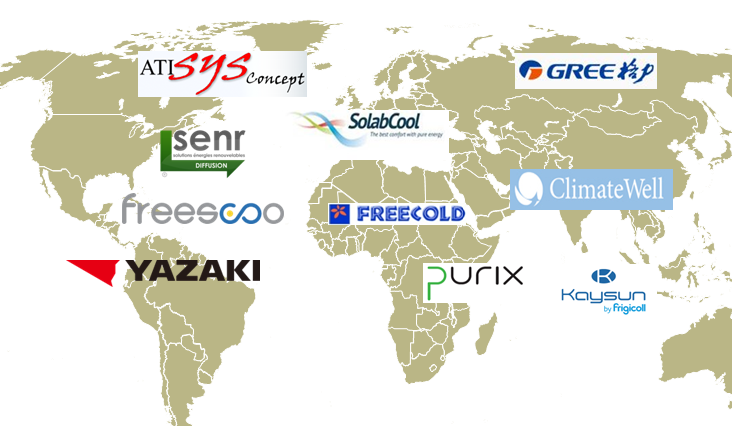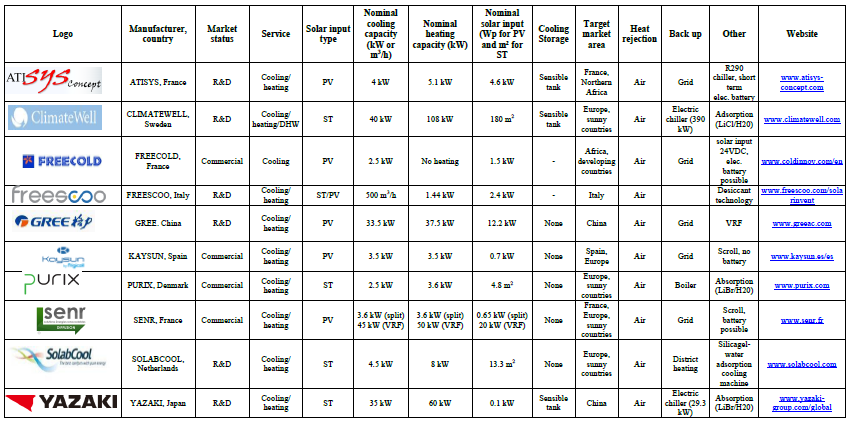
The biggest challenge for a small market like the solar cooling one – which has still a long way to go – is how to reduce system costs. One way to achieve this objective besides increasing market volume is standardisation. Companies from around the globe have responded to the challenge by developing pre-engineered solar cooling kits. To provide a better overview of the innovative technologies in this field, the researchers of IEA SHC Task 53, New Generation Solar Cooling and Heating Systems, collected technical data on 10 small to medium solar cooling units and published them in table form (see the attached document). The list includes market-ready as well as close-to-market solutions.

Click on Table for PDF Document
“The table shows a (non-exhaustive) list of innovative, state-of-the art solar cooling solutions,” explained Daniel Mugnier, Head of Task 53. Data collection will continue until the end of the task in June 2018 to ensure that new solutions can be incorporated in regular intervals.
The systems can be used for a wide variety of locations: on single-, multi-family and commercial property as well as office buildings and hotels. They can be either powered by solar collectors (four systems) or PV units (five systems) or a combination of both (one system). Obviously, there is dynamism in the market for cooling systems powered by solar electricity. This new competition had also driven R&D activities among developers of solar heat systems, Mugnier said.
The market overview is based on a survey among businesses taking part in Task 53. “We double-checked all the information provided to us and identified the scientific contact among the Task researchers who would conduct a more thorough technical analysis of the solution and further evaluate the data,” Mugnier said. Almost half of the systems have been commercially available; six solutions are in the R&D phase.
The listed suppliers have followed completely different technological paths. For example, Swedish brand Climatewell, which is owned by SaltX Technology, offers a centralised cooling unit with an adsorption (LiCl) chiller which gets its energy from a collector field and where an electric chiller serves as the backup source. In contrast, Chinese-based GREE supplies a variable refrigerant flow unit with an inverter directly supplied by solar electricity and used for either heating or cooling. And Dutch-based Solabcool has the adsorption cooling machine running in parallel to a district heating network, which provides backup thermal energy whenever solar heat is not available.
The next Task 53 meeting will take place in Messina, Italy, on 19 and 20 April 2017 alongside a workshop for installers and planners, particularly from Sicily. Companies or research institutions interested in participating in the task meeting can contact Daniel Mugnier in advance.
More information:
http://task53.iea-shc.org/ Daniel Mugnier